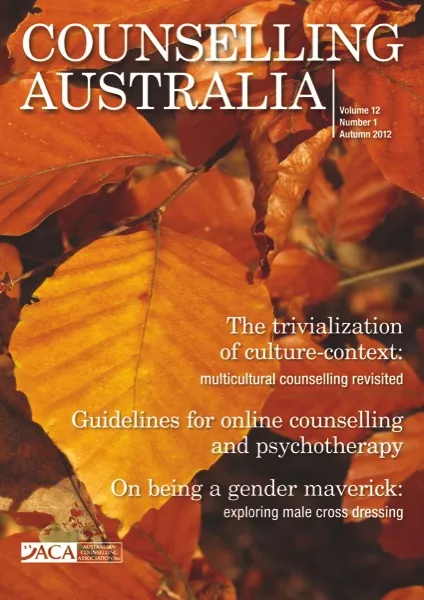There seems to be a belief held by many associations that publishing a printed journal is no longer a financially viable option. Some may also believe the task is too resource intensive for the small return. My challenge to you is, if I can publish a journal that returns over $65,000 in net profit why can’t you?
Print vs online
The going argument as to why many associations do not publish their own journal is most members go to the web for information, and it’s easier and more cost effective to disseminate information electronically. Many also state that the younger generation are far more responsive to electronic information, be it from web pages or social media.
This would be the case if your members were primarily from the younger generation, however a quick look at the make-up of the Australian workforce soon quashes this argument. According to the Productivity Commission, 67 per cent of the Australian workforce is made up of 25 – 55 year olds and 12 per cent are 55 and older, with the highest growth area being women entering the workforce at 45 years of age and over. This suggests that much of the workforce is not made up of the younger generation. Therefore, the majority of the current workforce is likely to be responsive to print journals. This is certainly true in the case of Australian Counselling Association (ACA).
The trick is being smarter at delivering a print journal. Putting a journal together can be expensive and resource intensive if you take it all upon yourself, however there are easier and more cost effective options.
Benefits of member communication
In 1999, I was employed as the Manager of the ACA and inherited the ACA Newsletter. The board at that time were thinking of developing an electronic e-zine to replace the printed publication.
I disagreed with the thinking and suggested that we develop two forms for disseminating information, making each unique in the information they contained. I believed we needed a monthly e-zine to keep members up-to-date with ACA activities in relation to professional development opportunities, meetings and a summary of political issues. The printed journal was to be used as a platform to discuss the latest issues in research, international news, peer reviewed articles and showcase ACA activities, such as conferences. I believed having a journal would:
- Reflect professional maturity
- Be a solid political platform
- Engage members on a personal level
- Create a formal platform to publish changes in policy
- Develop an advertising facility that would make the journal of interest to others outside of the association
- Be self-sufficient in funding through advertising
- Create a platform to have articles published
- Keep members informed of research within the industry.
The board agreed with my reasoning and in June 2000 the new ACA peer reviewed journal Counselling Australia was born.
In-house vs outsourcing
Initially each member received a copy as part of their membership benefits. The journal was printed at a local printer whilst the layout, content and all other publishing requirements were undertaken by myself and my administration staff.
By 2010, the journal had become resource intensive due to the content of the journal having increased significantly, which enlarged printing and postage costs. The model we were using needed an overhaul, so we sought out a professional publishing company.
We contacted Third Sector Services, a division of Great Southern Press, who after some discussion came up with a great package that included using full colour throughout the journal, introducing graphics to articles and a mail house solution. An added benefit was that Third Sector Services had agreed to design and develop a media kit at no extra cost for us, so I used this opportunity to raise advertising. The package also included a new refreshing look for the journal and the total cost was equivalent to our current costs. In other words, we received a complete new journal with significant upgrades and posting solutions at no further cost.
Revenue opportunities
The new journal was several grades above the previous model which allowed us to address a pressing issue. Since first introducing the journal as a member benefit the costs of production and mail had tripled, however membership fees had only risen marginally to meet administration and lobbying costs. No increases had been added to membership fees to meet the increased journal costs. I believed the new journal format gave us the opportunity to visit the issue of costs associated with the journal.
With the increased quality of content, I made the decision to change our policy from having the journal as a member benefit to making the journal a subscription based journal. It would either sink or swim on its own merits.
In December 2010, the journal became subscriber based at an annual cost of $60. Over 70 per cent of our members subscribed to the journal and ACA revenue for the journal for 2011 saw a net profit of over $65,000. My board was obviously delighted that not only had I increased our net revenue by over $65,000 with the introduction of subscriptions, but that we now had a more professional journal.
From ACA’s experience, seeking out a professional publishing house such as Third Sector Services has been a cost-effective exercise that has also given us significant benefits. In a ten year period, our journal has grown from being a member benefit to a journal sought out by other professionals and other industries as an advertising platform and quality publication. This in itself reflects that printed journals are still in demand.
Not only is having a professionally published journal popular with our members, it is also a solid revenue raiser, giving us a professional platform with which to communicate and inform our members, and readers.
- Odette Fleminghttps://thirdsector.com.au/author/odette-fleming/
- Odette Fleminghttps://thirdsector.com.au/author/odette-fleming/
- Odette Fleminghttps://thirdsector.com.au/author/odette-fleming/
- Odette Fleminghttps://thirdsector.com.au/author/odette-fleming/











